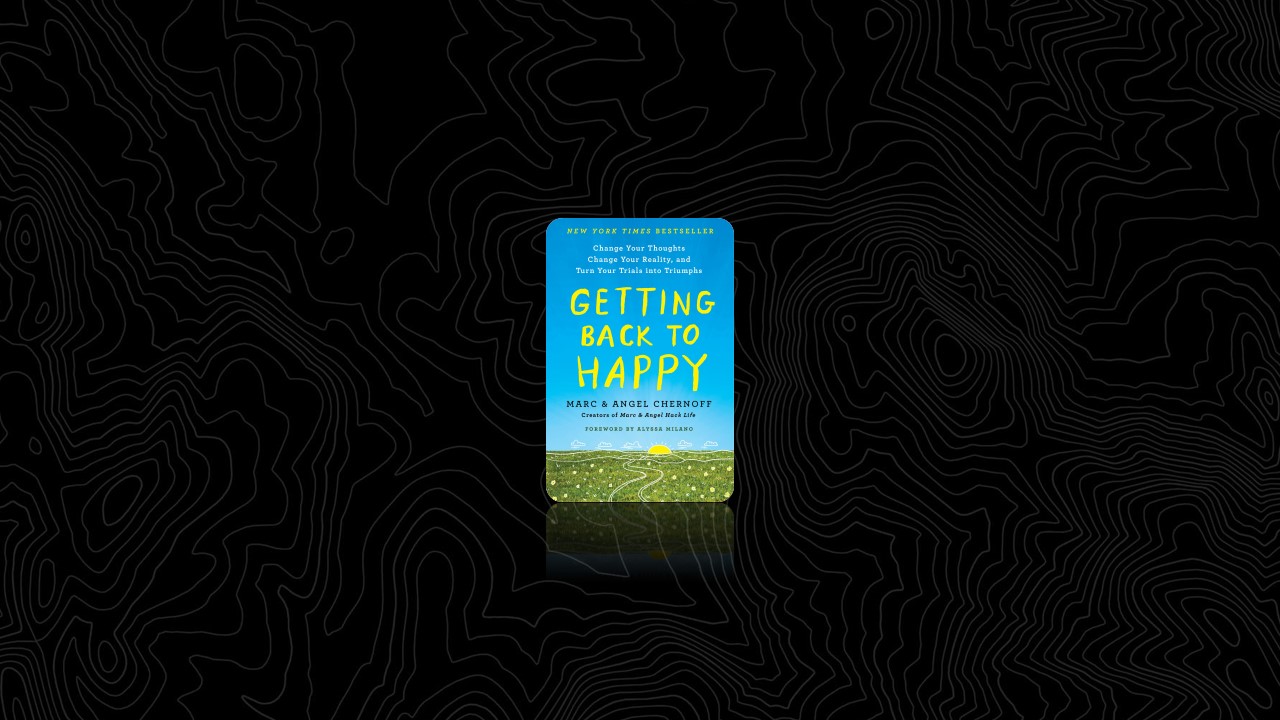Rituals: Practice Daily What You Want to Manifest Regularly
Life is painful. Change is painful. Growth is painful. But in the end, nothing is as painful as staying stuck where you do not belong. It’s always better to be exhausted from meaningful effort on a daily basis than to be tired of doing nothing. Too often we spend our days—and our lives—thinking about taking the important steps we never take. We suffer far longer than we have to simply because we don’t step through the tragedies and challenges we face on a daily basis.
Today’s progress is always compounded by yesterday’s effort, no matter how small.
We put the hard things off until tomorrow for a variety of reasons, until we’ve lost our momentum. We grow accustomed to the belief that things should be easier than they are, and that waiting another day or two makes the most sense. Then one day we wake up and we’re emotionally incapable of doing the hard things that need to be done.
Let this be your wake-up call!
Your mind and body both need to be exercised to gain strength. They need to be challenged, and they need to be worked consistently, to grow and develop over time. If you haven’t pushed yourself in lots of little ways over time—if you always avoid doing the hard things—of course you’ll crumble on the inevitable days that are harder than you expected.
Exercise
On a piece of paper, write down at least five rituals you believe you practice every day. They can be both positive and negative. The key here is to be deliberate and mindful. Evaluate each of these rituals by asking yourself a few questions that will help you better understand the purpose of those rituals in your life and reflect on whether or not they add or subtract from your well-being:
- Who am I when I practice this ritual?
- Is this ritual bringing me closer to or further from where I want to be?
- How is it helping me grow?
- How is it hurting me?
- What’s the next positive step I can take with this ritual?
Do you see the power in simply asking yourself these questions? You won’t know what rituals you want to implement in your life until you sit down and reflect on where you are now. So let this be a little wake-up call. Instead of looking outside yourself for answers, start asking yourself the right questions. They will serve as guideposts that have a powerful influence on the direction of your life. This kind of self-inquiry can help you stay true to your principles, pursue your desires, grow through adversity, and add value to the world around you. And it’s the rituals you create from that self-inquiry that will allow you to start making progress.
The Art of Mindfully Prioritizing
The moment we admit to ourselves that we’re trying to cram too many things (tasks, obligations, distractions) into a relatively small space (twenty-four hours in a day), it becomes obvious that we need to clear some clutter from our schedules. Mindful prioritization is the key.
Pay close attention to all the things you do today—all the things you’re trying to fit into twenty-four hours. How much TV are you watching in the morning and evening? What websites are you browsing? What games are you playing? How much time are you spending texting, emailing, or updating your social media accounts? How much online window shopping are you doing? How much time do you devote to eating, cleaning, and taking care of others? What else are you spending the precious minutes of your day on?
What you might notice first when you start to dig into your busyness is that you’re doing too many random things that don’t need to be done—too many time wasters. Then you might also notice you’re overcommitted, that too many obligations are filling up your life with needless stress and activity. You can start stealing back your time by eliminating as many nonessential distractions and obligations as possible, and saying no to new ones that arise. This is easier said than done, of course, but the important thing to realize is that you can change how you allocate your time.
You can do only one thing at a time.
Exercise
Here are a few short mindfulness practices that will help you center yourself and be present, wherever you are and whatever your state of mind.
- Do a quick body scan. Focus on your body, and notice how each part of it feels right now. Do this for thirty seconds.
- Pay attention to your breath for sixty seconds. Listen to it, and feel it.
- Watch your thoughts about concerns, fears, judgments, doubts, and ideals for sixty seconds. Recognize that they are simply thoughts; you don’t need to believe them or react to them.
- Walk mindfully, paying attention to your feet, your body, your breath, and your surroundings.
You can do each of these short mindfulness practices in little bits whenever you need them throughout your day. Remember, you don’t have to meditate for thirty minutes to get the benefits of mindfulness. Just a couple of focused minutes of mindful attention can pay off hugely. The key is to make it a ritual, and do it every day.
How to Let Go and Move On
There’s a quote that we often think of when we’re considering how we’d like to control all aspects of our lives: “If you want to control the animals, give them a bigger pasture.” If you have a pasture full of animals and they’re all acting rowdy, can you really expect yourself to be able to control them?
No.
What you can do is give them a larger pasture. Let them roam. Let them graze and wander. By giving them some extra space, you’ll see that relinquishing control can be freeing, and can even give you a new perspective on what’s really important.
This same philosophy holds true for many aspects of life—stepping back and allowing certain things to happen means these things will take care of themselves and your needs will also be met. You will have less stress (and less to do) and more time and energy to work on the things that truly matter—the things you actually can control, like your attitude about everything.
This form of letting go is not giving up. It’s about surrendering any obsessive attachments to specific people, outcomes, and situations. It means showing up every day in your life with the intention to be your best self, without expecting life to go a certain way. Have goals and dreams, take purposeful action, and build great relationships, but detach from what you think every aspect of your life “must” look like.
Exercise
The story I’m telling myself can be applied to any difficult life situation or circumstance in which a troubling thought is getting the best of you. For example, perhaps someone you love (husband, wife, boyfriend, girlfriend, etc.) didn’t call you on their lunch break when they said they would, and now an hour has passed and you’re feeling upset because you’re obviously not a high enough priority to them. When you catch yourself feeling this way, use the phrase: The story I’m telling myself is that they didn’t call me because I’m not a high enough priority to them.
Then ask yourself these questions:
- Can I be absolutely certain this story is true?
- How do I feel and behave when I tell myself this story?
- What’s one other possibility that might also make the ending to this story true?
Give yourself the space to think it all through carefully. Challenge yourself to think differently! The story I’m telling myself and the three related questions give you tools for revisiting and reframing the troubling or confusing situations that arise in your daily life. From there, you can challenge the stories you subconsciously tell yourself and do a reality check with a more objective mindset. This will ultimately allow you to let go of the stories that aren’t helping you get back to happy, and make better decisions about every aspect of your life.
Self-Love: Commit to Putting Yourself on Your To-Do List
Self-love is learning to create space for yourself; it’s putting yourself on your to-do list, scheduling time and space to practice spiritual and healthy living, both physically and mentally. Self-love is making sure that our lives aren’t constant busyness, rushing, and obligation. Rather, it’s managing our time wisely enough to know that we need to get enough rest, feed our passions, and support ourselves in every way we need to.
If you’re low on self-love, you’re never going to feel like you’re doing enough for the people you love, the businesses you run, the employers who provide your livelihood. We have to learn to be our own best friends, because sometimes we fall too easily into the trap of being our own worst enemies. We fall in love with the idea of others loving us, and we forget to love ourselves.
Even if you are generally a happy person, neglecting yourself is a habit—or ritual—that can easily creep up on you. The key is to give yourself the extra attention you need and deserve. Resisting and ignoring your own feelings does not serve you. It leads to stress, illness, confusion, broken relationships, anger, and depression. If you have experienced any of the above, you know that these states of mind can be horrifically unhealthy; when you’re in the habit of self-neglect, your standards for living nose-dive, and it becomes harder and harder to escape.
Right now, ask yourself: “Do I love myself enough to never lower my standards for the wrong reasons?” Find the strength to say yes!
Life is about living honorably. It’s about doing the right thing for you, no matter what, even when nobody else knows or understands. At the end of the day, your reputation is what other people know about you. Your honor is what you know about yourself.
Exercise
Divide a piece of paper into two columns. In one column, write down all the things you like about yourself—your personal strengths, difficult situations you’ve overcome, people whose lives you’ve touched, personal accomplishments, and values that increase your self-respect. On the other side, make a list of your personal weaknesses or issues that you still struggle with—perhaps you’re selfish sometimes, or avoid taking responsibility, or maybe you haven’t followed through with your commitments. Whatever these issues are, bring them into the light of day to be examined, and they will automatically feel less shameful.
At the end of the exercise, read both the strengths and the weaknesses columns aloud. Next, put your hand on your heart and tell yourself, “I am strong. I am weak. I am flawed. I am broken. I am learning. I am vulnerable. I am human. And despite all of this, I give myself permission to love myself unconditionally. I am a growing, evolving being who uses past mistakes as fuel for my journey of growth. I accept myself as I am, and I set an intention to become the best version of me.”


